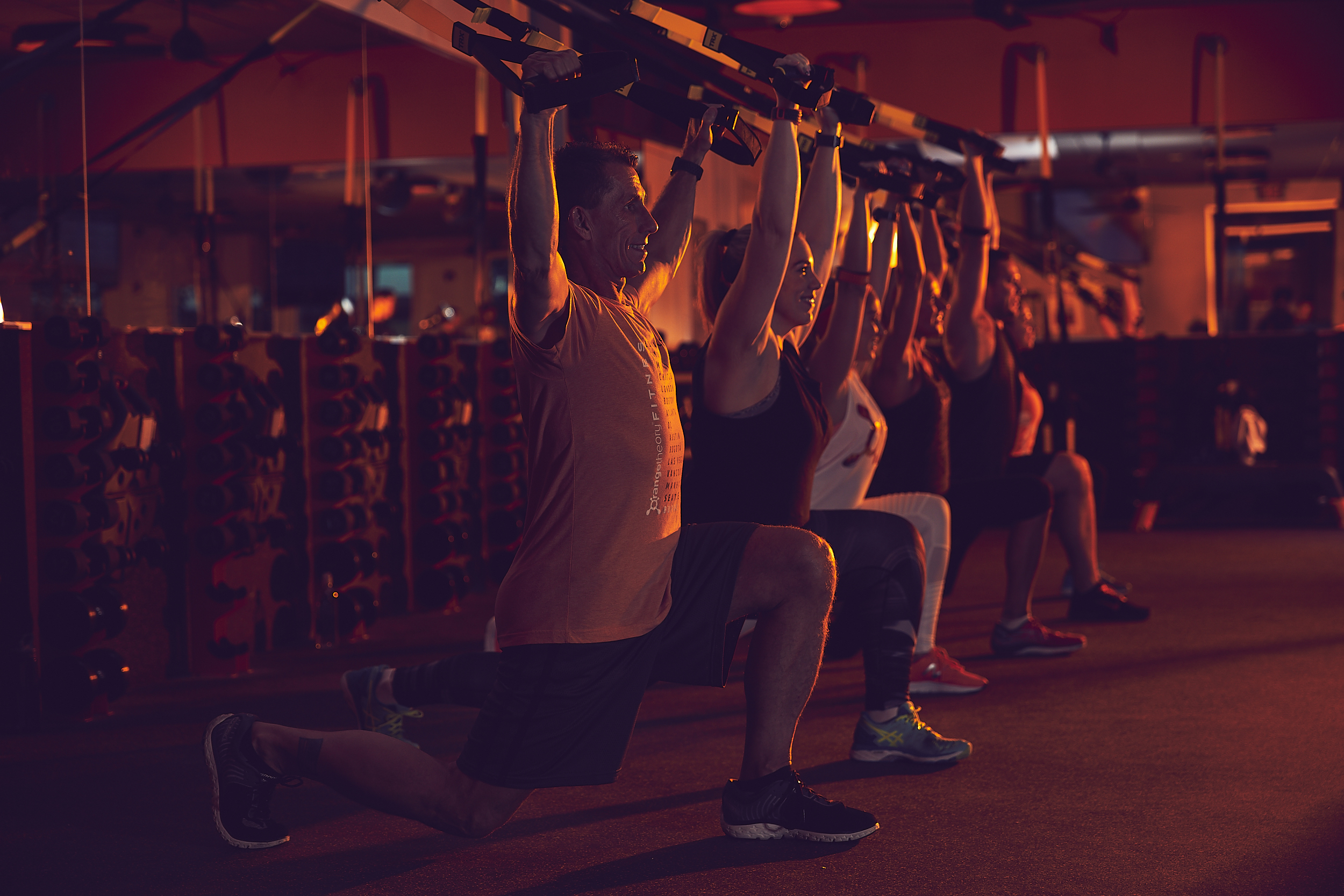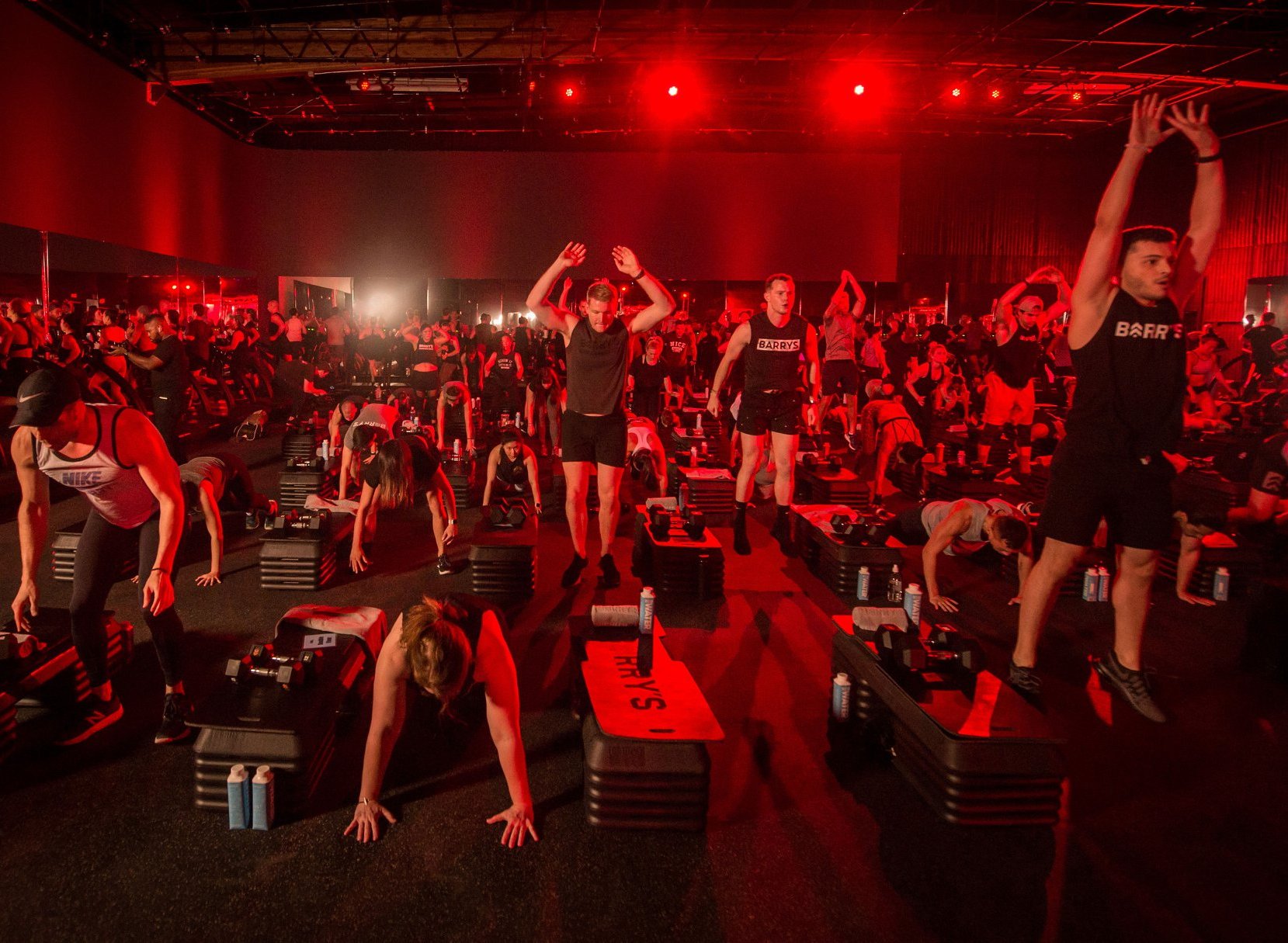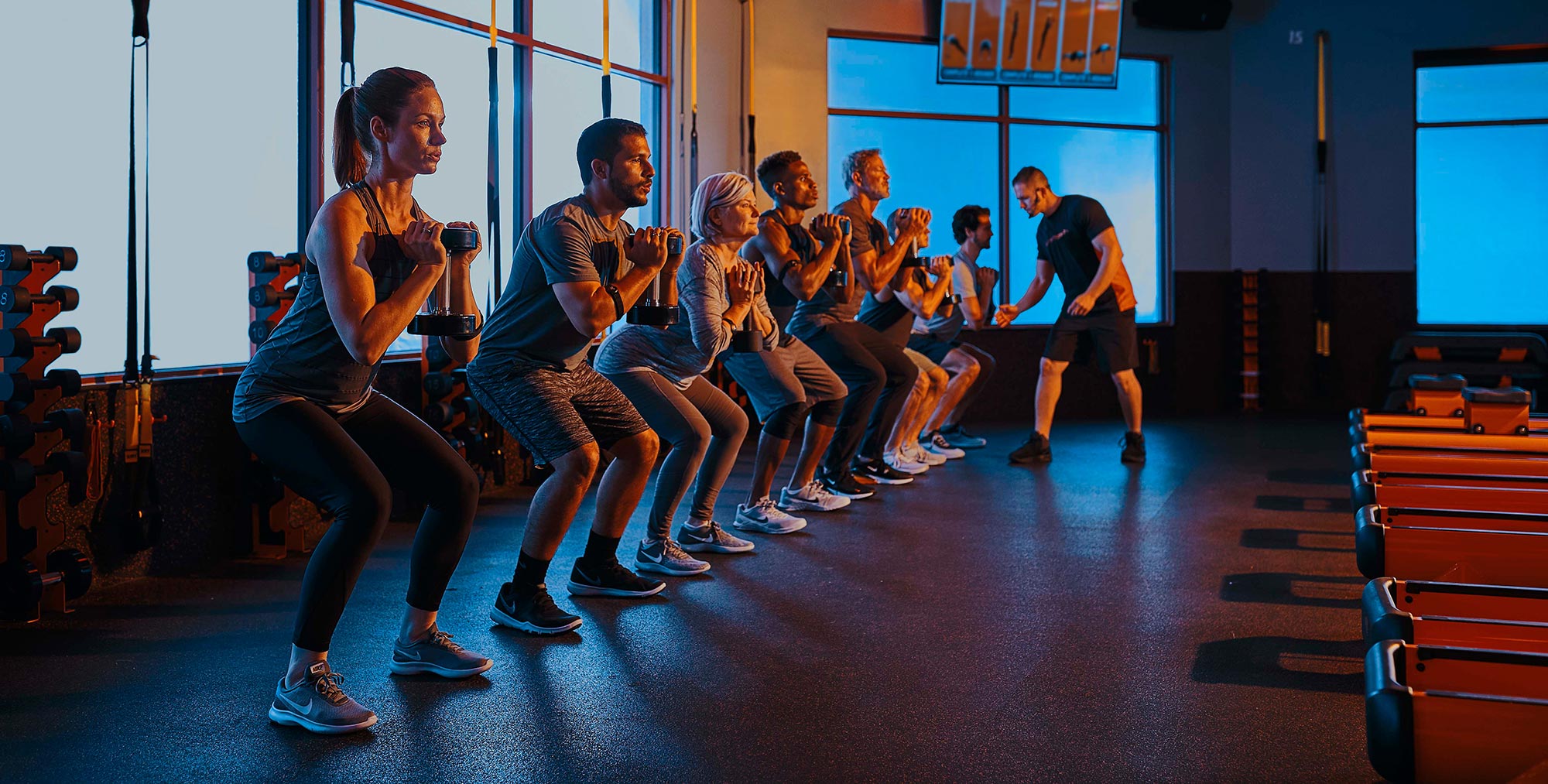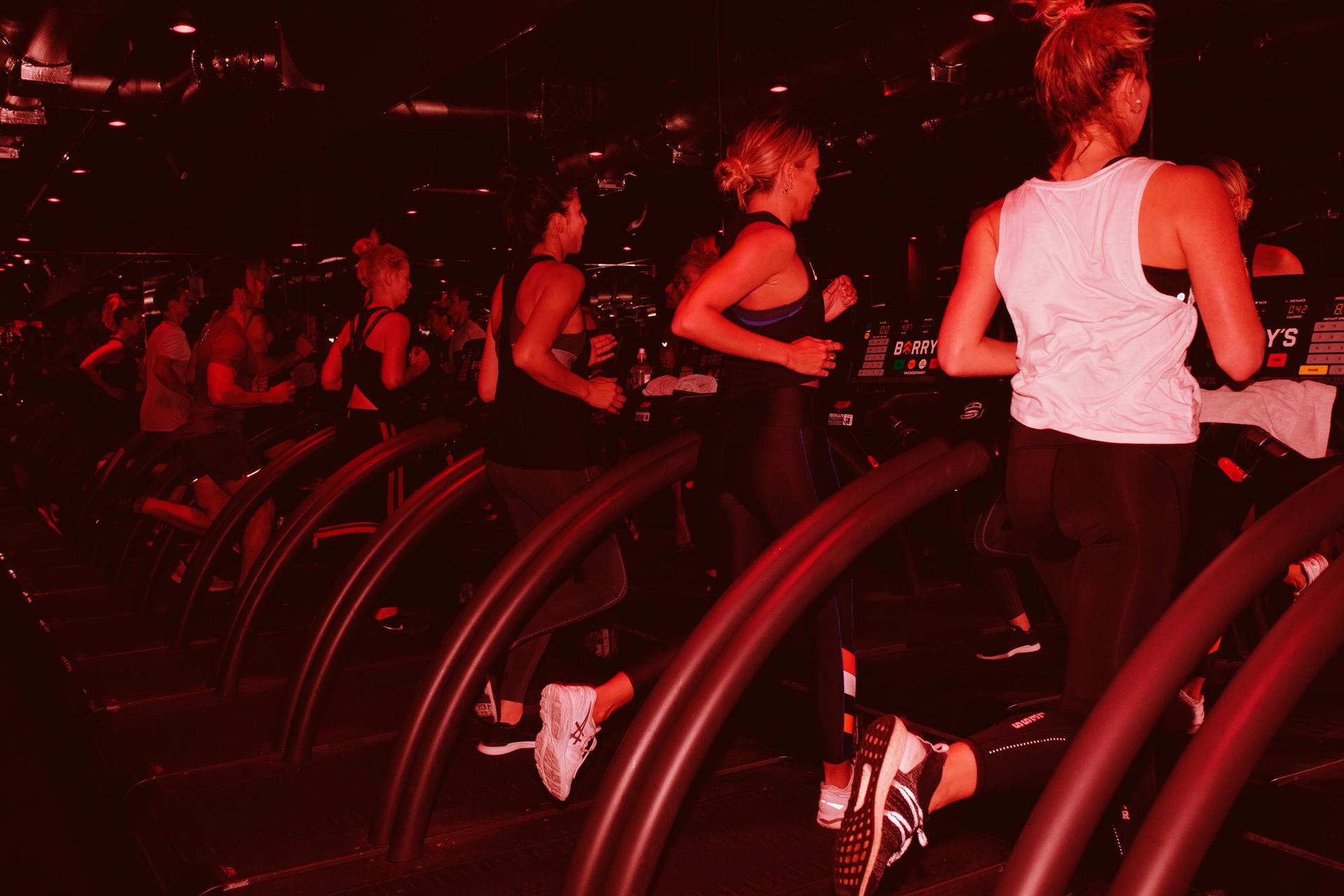Behind The Brand: Barry’s Bootcamp vs. Orangetheory Fitness
Boutique fitness is booming. From niche classes to all-encompassing concepts, there’s no shortage of options. But, amidst a crowded landscape, high-intensity interval training, or “HIIT”, workouts have emerged as a favorite among fitness-seekers.
More specifically, when it comes to HIIT, two fast-growing brands are leading the way. We’re talking about Barry’s Bootcamp and Orangetheory Fitness (OTF).
Whatever similarities these studios share are less interesting than where and how they diverge. From branding and content to community and the workout itself, we’ve lined up a head-to-head comparison to see where each studio stands. Let’s get into it.

Branding
Both Barry’s and OTF describe themselves as multi-faceted HIIT-style workouts. Sure, the workouts incorporate similar elements, but the branding of each studio couldn’t be more different.
Let’s start with Barry’s. It’s likely you’ve heard of Barry’s Bootcamp in association with its many A-list celebrity patrons — like Kim Kardashian and Jessica Biel. In fact, Barry’s has been recognized as one of the top celebrity workouts by a number of publications. And it’s not hard to see why.
Barry’s is positioned as cool and edgy. Their branding feels intense but calculated. Black and white serve as the main colors, with red used as an accent color. Barry’s imagery across its site and social media features young, ultra-fit, and attractive 20- and 30-somethings. Off the bat, you know this brand is playing up aspirational fitness. But the imagery is only one part of the equation. Barry’s tonality is hip and youthful, leaning into millennial colloquialisms like, “Barry’s is a vibe” and almost-suggestive phrases like, “Get a (red) room.”
Jump into Orangetheory’s site and social, and you’ll find a different take. You get the sense that Orangetheory is less millennial-focused, featuring more of a universal workout. And in case there was any doubt, they confirm it:
We designed this workout with one goal in mind: to make sure anyone who tries it feels successful.
Orangetheory’s branding feels amorphous, with an emphasis on the color orange. Their imagery features a wide diversity of ages and fitness levels. And while their voice is friendly and approachable, it ultimately doesn’t take on a specific personality — not uncommon in brands targeting a wide audience. A few minutes with the brand makes it clear that this is a workout for anyone and everyone.
While the approaches to audience and branding differ, both Barry’s and OTF are aligned on one thing: their studio isn’t about the workout, it’s about the lifestyle. What exactly that lifestyle is, however, is a little different.
- Thanks to decisive branding, the Barry’s lifestyle is clear: the young, successful, millennial hustler who works hard, plays hard, dresses well, and eats clean. This is emphasized by the in-studio Fuel Bars that offer a variety of shakes and third-party drinks, as well as the Nike- and lululemon-collab studio merch.
- Vague branding makes OTF’s lifestyle less clear, but it seems to take a broad-strokes lean: Whoever you are, wherever you are, “you shouldn’t live to exercise. You should exercise to live.”

Community
With Barry’s laser focus on the millennial crowd, you might imagine they’d outpace Orangetheory on social media, particularly on Instagram. However, the opposite is true.
Orangetheory has a robust social community, with 272K followers on Instagram with consistent engagement across their posts. Barry’s comes in close, with 222K followers on Instagram and comparable engagement. OTF rallies the community around its #morelife hashtag, while Barry’s sticks to a more straightforward #barrys.
Of note, OTF vastly outnumbers Barry’s with respect to locations, with the former counting 1,200+ studios and the latter numbering 70 units open or in development. So, an argument could be made that the Barry’s community is disproportionately strong. Location count aside, each brand’s Instagram content reflects their branding directions aptly:
- Barry’s uses styled content featuring their young, fit instructors, collaborations, and neon-heavy studios.
- OTF’s content relies on graphics, sharing member testimonials, and user- or (in this case) member-generated content.
It’s also worth exploring how each brand promotes their instructors. Barry’s adopts an instructor-as-influencer model, utilized by a number trendy fitness brands like SoulCycle and Rumble Boxing. Barry’s website lets you view each trainer in every location, sharing their photo, a bio, what they’re inspired by, their superpower, and guilty pleasures. Pair that with the brand’s emphasis on instructors on Instagram, not to mention the instructors owned Instagram accounts (many with followers in the tens of thousands), and it’s clear that Barry’s instructors contribute heavily to the aspirational feeling of the brand.
Orangetheory, on the other hand, does not share this approach. It can be a challenge to identify the instructors at each location. One method would have you search Instagram for a studio-specific Instagram. Even then, an instructor would have to be tagged, then you could explore their account — unless their profile is private.
Instructors can be a key differentiator and community builder in a growing boutique fitness space, a clear opportunity for Orangetheory moving forward.

Content and Partnerships
For both Barry’s and Orangetheory, content and partnerships reinforce their brand strategies.
Orangetheory takes its community beyond Instagram onto YouTube, with a channel of over 100 videos and over 6K subscribers. The video content is a hodgepodge of how-tos and coach spotlights, where the messaging and production quality is lacking. Playlists include topics like:
- Exercises to alleviate pain
- OTF Fitness Tip Of The Day or coaching from inside an OTF studio
- Coach spotlights that feel a bit like like local news: sit-down interviews split up with generic B-roll (that doesn’t include the coach being interviewed) and title cards that display each question covered in the interview
While the content can be improved, it exists — and that’s a step in the right direction. When it comes to going head-to-head with Barry’s on this front, we’re unable compare. Barry’s doesn’t have a YouTube channel. As platforms like YouTube continue to dominate content consumption, both brands could capitalize on this missed opportunity.
Partnerships are another critical area that can help define a brand. As mentioned, Barry’s has recently collaborated with Nike on their studio merch. With the global athleisure market set to reach $547B by 2024, studio merchandise is a solid move. For one, it establishes brand equity. Plus, it’s a way to scale beyond the physical studios — especially with other boutique brands like SoulCycle seeing non-riders accounting for 25% of e-commerce sales.
Barry’s has also delved into partnerships for events, partnering with progressive, on-trend brands like Dosist for an event series and brands with old-school street cred like the Chicago Bulls for pop-up workouts.
Perhaps the biggest Orangetheory partnership, from a pop culture perspective, is the brand’s relationship with the hit Netflix show Queer Eye. When the Fab 5 need to get someone in shape, they head to an Orangetheory. The collaboration is a smart one, emphasizing the accessible and inclusive attributes that OTF hangs its hat on. Earlier this year, Orangetheory hinted at an upcoming partnership with Apple, but no further announcements have been made yet.

The Workout
While a number of factors differ between the two HIIT-focused studios, they may be most aligned in the makeup of their workouts.
Barry’s workout features two primary components: state-of-the-art treadmills and the weight floor. You’ll find different workouts on different days: Arms & Abs, Abs & Ass, and Full Body among them. The workout has users bouncing back and forth between both sides of the floor throughout the 50–60-minute class.
Orangetheory’s studios are broken into three parts: treadmills, rowers, and the weight floor. Depending on the class, you may spend 50% of the time on the treadmills and 50% of the time between the rower and the weight floor — or equal time with all three across the one hour workout.
While the actual fitness components are similar, there are a few key differences in the approach. Orangetheory’s key value proposition lies in its heart rate monitor system. Members wear an OTF heart rate monitor on their chests or wrists during the class. The goal is to spend time across the five key heart rate zones, with 12 minutes or more in Zones 4 and 5 (orange and red, respectively). Screens in the studio let you track your heart rate and zone throughout the class. The heart rate monitors are optional, and some members opt to just do the workouts without the tracking.
Barry’s doesn’t incorporate any similar data tracking into their classes, focusing instead on the workout at hand. In these classes, beginners are expected to learn quickly; there’s minimal time or attention given to new members, so those unfamiliar with HIIT workouts may feel lost at the onset.
Orangetheory is on the other end of the spectrum. New members must schedule their first class over the phone and arrive 30 minutes early for a thorough walk-through. Instructors tend to spend extra time and attention on the new members during class and even have the class give them a round of applause when the workout ends.
New or not, you’ll always receive a thorough explanation of the exercises at Orangetheory, particularly on the weight floor — where the instructors clearly demonstrate every move before the session begins. If you need additional reference, in-class screens show video of people demonstrating the proper form of the weight floor workouts.
While not the most critical part of the workout, the studio atmosphere certainly affects the overall customer experience.
At Barry’s, you can expect an on-brand experience for a trendy boutique studio:
- Energetic instructor that motivates and isn’t afraid to curse
- A dark studio with Barry’s signature red-light accents
- Extra loud, custom mixed music featuring a blend of hip-hop and pop
- Pro: Creates a cool, intense vibe that immerses you in the workout
- Con: Can be difficult to see or hear the instructor
At Orangetheory, you’ll find a more accessible atmosphere:
- High-fives from the instructor on the way into class
- Bright studio, occasional use of orange accent lighting
- Custom playlists that span censored hip-hop, top 40, and rock
- Pro: Easy to hear and see the instructor to follow along the workout
- Con: Doesn’t hit a hip mark (especially with the censored music)
Business Model
Consumer-facing branding, community, and workout aside — Barry’s and Orangetheory are fundamentally different in their business models.
Barry’s is a privately-owned-and-operated business, with over 70 locations open or in development across North America, Europe, the Middle East, Asia, and Australia. The class, experience, and brand is tightly controlled across every studio.
Orangetheory, on the other hand, employs a franchise model. This allows the brand to have over 1,200 locations across the globe.
The business benefit of the franchise model is undeniable, but it comes at a cost. While there are certain elements consistent across locations, there are still variables that differ in branding and experience from location to location.
- Can’t use the app to book at other locations
- Individual systems that prevent users from booking first-time classes at other OTF studios using the app
- Different Instagrams for each studio, with variations in messaging and content
Takeaway
Barry’s Bootcamp and Orangetheory Fitness are a study in two brands that amassed a cult-following in the HIIT bootcamp space in two totally different ways.
Barry’s is an experience for the fitness enthusiast, the millennial consumer who wants their workout to come with a cool factor. It’s dressed up — and it delivers with an intense workout that is sure to kick your butt.
Orangetheory, on the other hand, is an experience for everyone — regardless of fitness level or lifestyle. You might miss out on the trendy packaging, but you won’t skimp out on a killer workout.
For the everyday consumer, though, the choice might come down to personal preference in branding, atmosphere, or community. It’s also possible that it simply comes down to access. Barry’s 70 locations pale in comparison to Orangetheory’s 1,200+ locations, which could make Orangetheory the default for customers outside of major metropolitan areas.